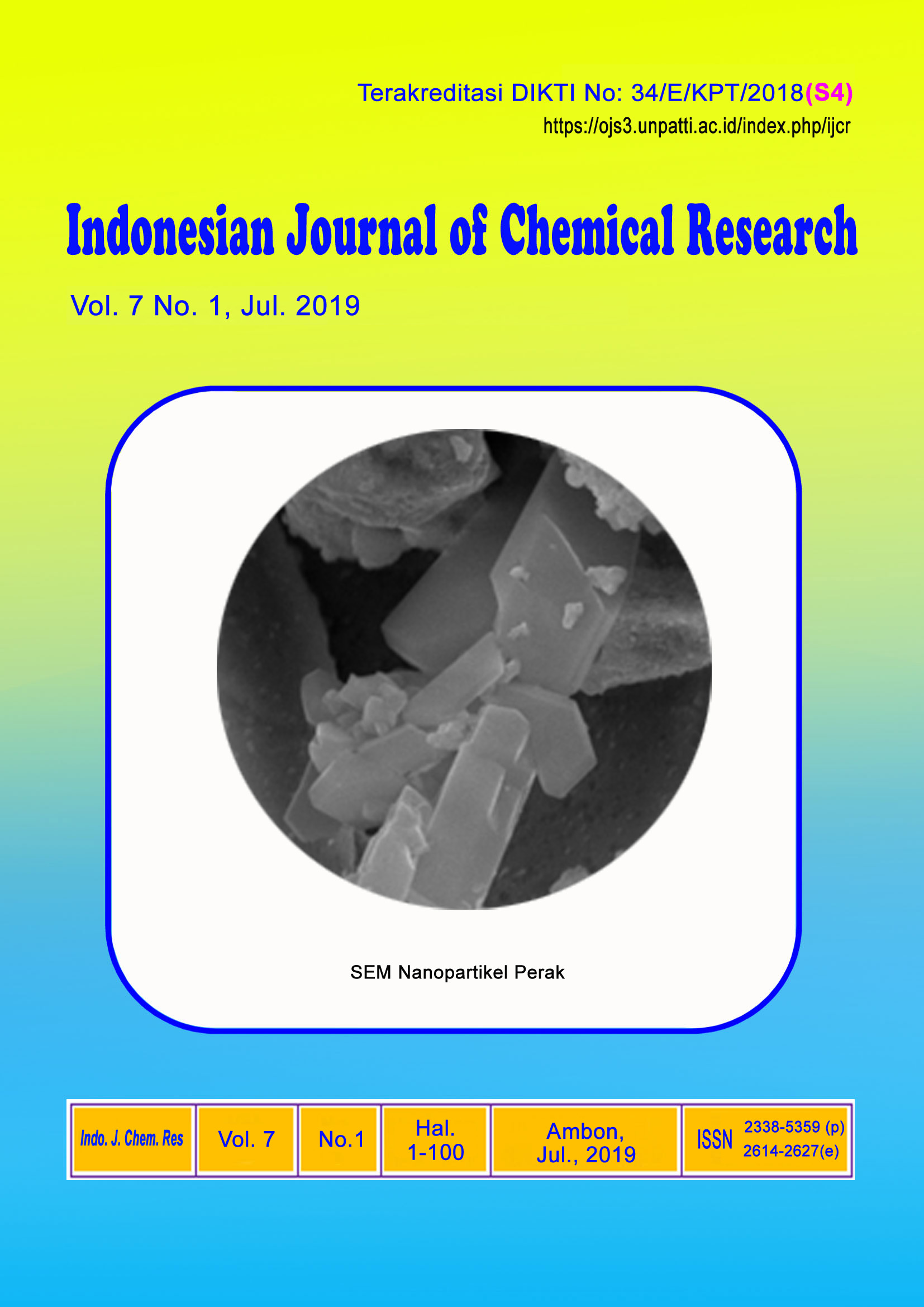Fitoakumulasi Logam Ni dan Zn Dalam Tumbuhan Nipah (Nypa fruticans) Di Sungai Tallo Makassar
Phytoaccumulation of Nickel and Zinc in Nipah Plant (Nypa fruticans) at Tallo River, Makassar
Abstract
Research on phytoaccumulation of Ni and Zn in Nypa fruticans plants at Tallo River has been done to know the capability of Nypa fruticans for accumulating Ni and Zn. Water, sediment, and plant tissue samples were taken at five stations on the Tallo River using a cutting tool and pipe paralon. Sediment was digested with concentrated HNO3 while plants tissue using HNO3 6M, then analyzed by ICP EOS Shimadzu 9000. The results showed the average concentration of Ni inside part of the plant from station 1, 2, 3, 4 and 5 in order following 21.759,03 ppm, 19.056,03 ppm; 36.806,25 ppm; 10.736,66 ppm dan 13.849,25 ppm. Average concentration of Zn inside the plant from station 1, 2, 3, 4 and 5 in order following 1.319,60 ppm; 1.362,93 ppm; 2.053,46 ppm; 1.591,60 ppm; dan 1.474,09 ppm. Accumulation of Zn and Ni in Nypa fruticans is grouped as hyperaccumulation plant because the ability of accumulation Ni bigger than 10.000 mg/kg and hyperaccumulation towards Zn because able to accumulate Zn bigger than 10 mg/kg. BCF and TF value show that Nypa fruticans naturally able to be used as an phytoremediation plant towards Ni and Zn, especially phytoextraction and rhizofiltration.
Downloads
Copyright (c) 2019 Nursiah La Nafie, Syarifuddin Liong, Rizda Arifin

This work is licensed under a Creative Commons Attribution-NonCommercial-NoDerivatives 4.0 International License.
Authors who publish with this journal agree to the following terms:
- Copyright on any article is retained by the author(s).
- The author grants the journal, the right of first publication with the work simultaneously licensed under a Creative Commons Attribution License that allows others to share the work with an acknowledgment of the work’s authorship and initial publication in this journal.
- Authors are able to enter into separate, additional contractual arrangements for the non-exclusive distribution of the journal’s published version of the work (e.g., post it to an institutional repository or publish it in a book), with an acknowledgment of its initial publication in this journal.
- Authors are permitted and encouraged to post their work online (e.g., in institutional repositories or on their website) prior to and during the submission process, as it can lead to productive exchanges, as well as earlier and greater citation of published work.
- The article and any associated published material is distributed under the Creative Commons Attribution-NonCommercial-NoDerivatives 4.0 International License.






_copy1.png)










